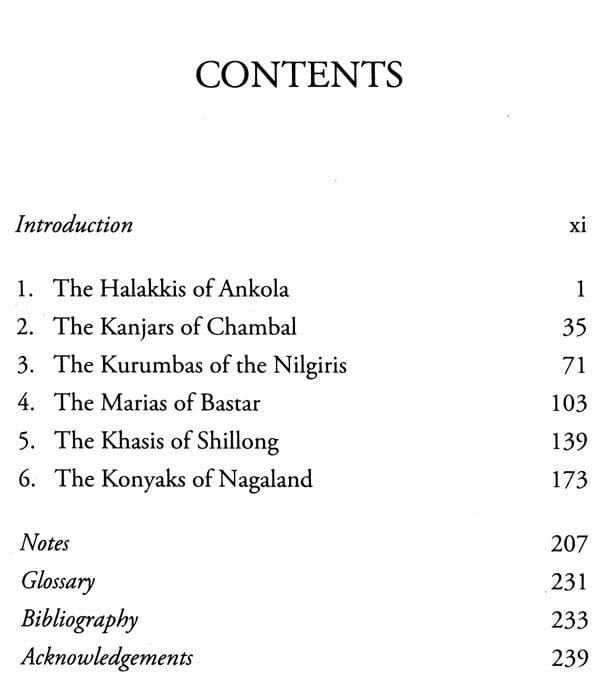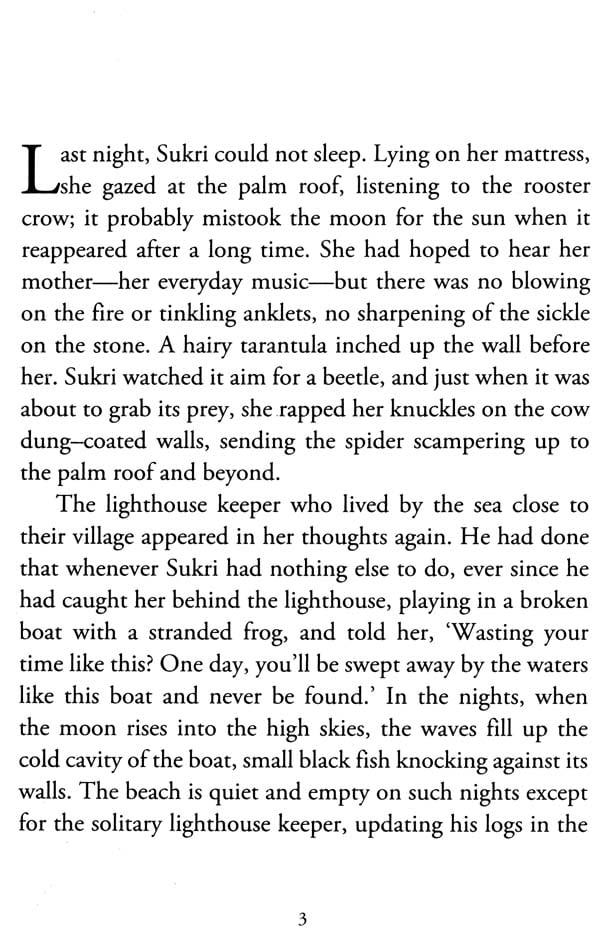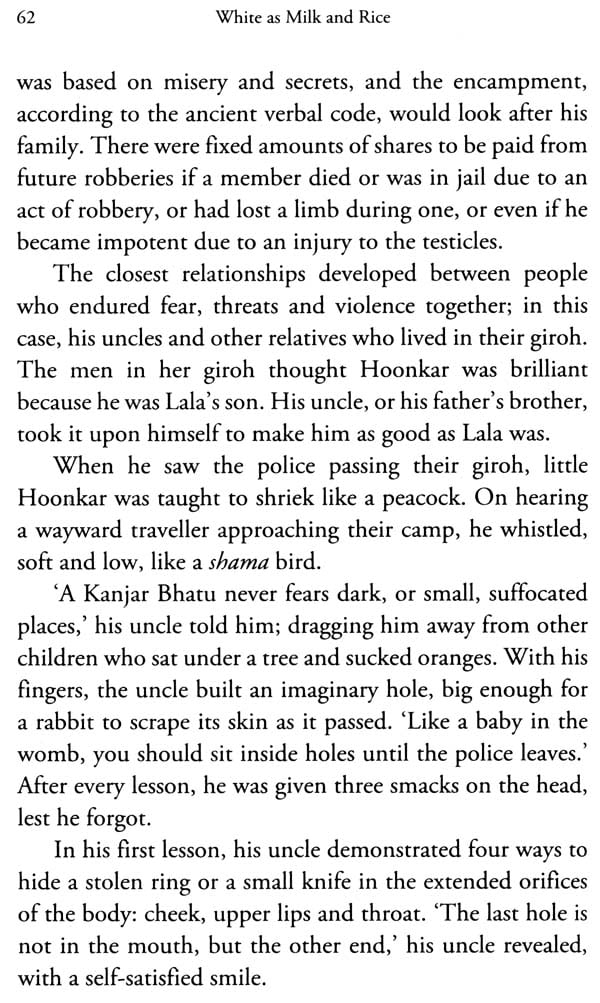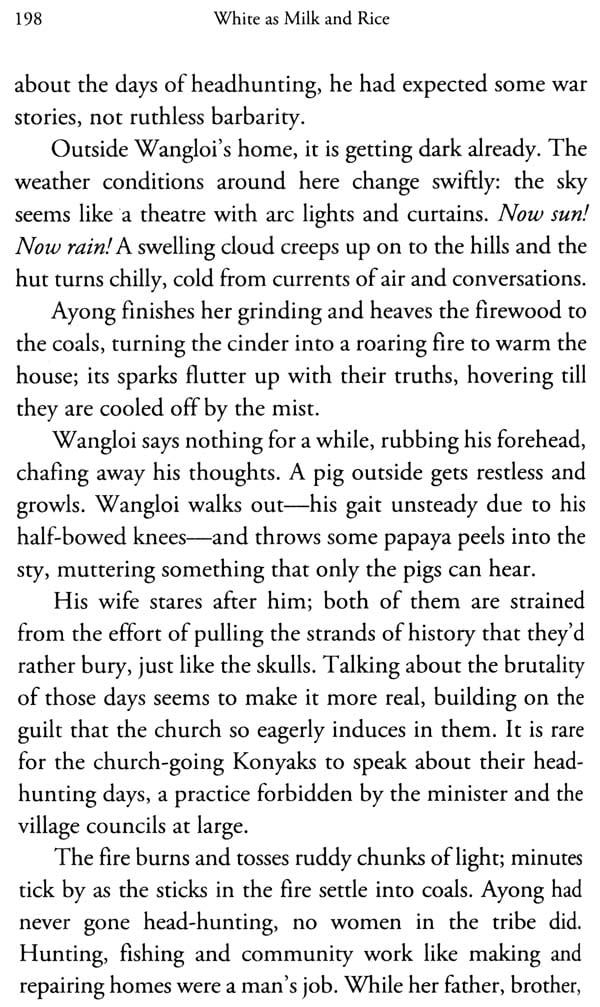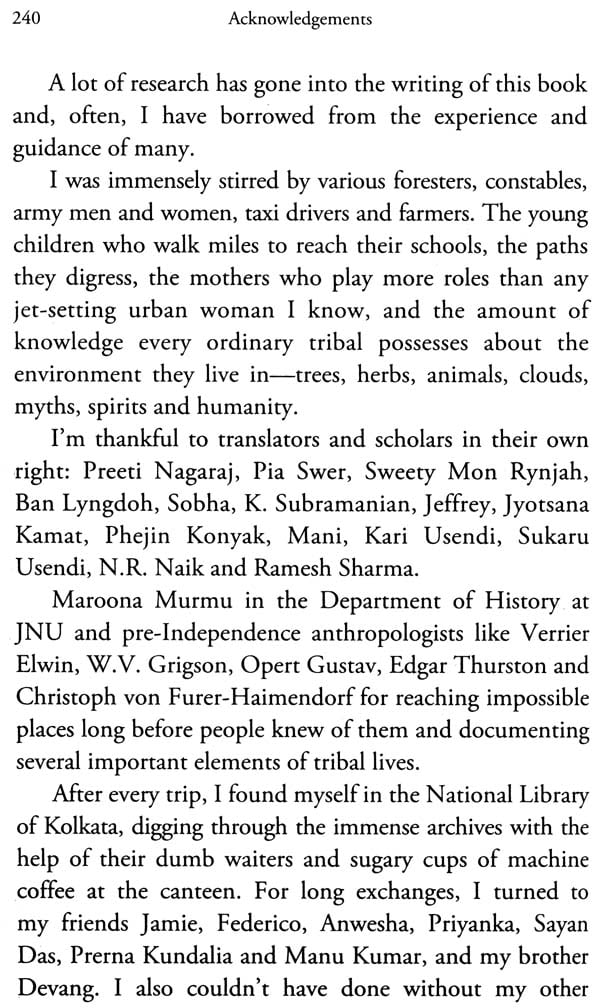
White as Milk and Rice - Stories of India's Isolated Tribes
Book Specification
| Item Code: | NAY926 |
| Author: | Nidhi Dugar Kundalia |
| Publisher: | Penguin Random House India Pvt. Ltd. |
| Language: | English |
| Edition: | 2020 |
| ISBN: | 9780143429470 |
| Pages: | 254 |
| Cover: | PAPERBACK |
| Other Details | 8.00 X 5.50 inch |
| Weight | 180 gm |
Book Description
marriage, hut with rules one may not sleep with a partner more than three times. The Halakki women from the Konkan coast sing throughout the day-in forests, in fields, in the market and at protests. The Kanjars have plundered, looted and killed generation after generation, and will show you how to roast a lizard when hungry. The original inhabitants of India, these Advises still live in forests and hills, with religious beliefs, traditions and rituals so far removed from the rest of the Country that they represent the anthropological wealth of our heritage.
White as Milk and Rice weaves together prose, oral narratives and Advise history to tell the stories of six remarkable tribes of India-reckoning with the radical changes over the last century-as they were pulled apart and thrown together in ways none of them could fathom.
'Nidhi Dugar Kundalia does justice to the arduous task of chronicling the lives of six tribal communities from India's heartland as she writes about their intimate moments and interactions with the outside world, their pains and celebrations, beliefs and wisdom. She tempers her surprise and curiosity with empathy and fine writing, producing a book that does not intrude like a voyeur but places the reader in the midst of these people like a benign eyewitness'-Hansda Sowvendra Shekhar, author of The Advise Will Not Dance
'I made a documentary film on the tribal communities of Bastar titled Close to Nature exactly fifty-two years ago. At the time, the cultural practices and lifestyles of the Maria and the Muria communities of both the plateaus and the plains had barely changed from the time their history began to be recorded. This was largely due to their semi-isolated existence in difficult-to-reach forested areas, almost untouched but altogether surrounded by our ever-expanding agrarian! industrializing world. It took no more than a couple of decades for their entire way of life to be radically altered, if not altogether obliterated, leaving behind detritus in the form of desperately poor and helpless communities that have been forever exploited and pushed to the bottom of the civilization pyramid. Change overtook these communities with drastic suddenness, their fragile cultures unable to withstand the pressure of our rapidly urbanizing civilization. White as Milk and Rice has engrossing tales that are told with genuine feeling and beautiful details of constantly evolving human emotions. There are books that change the way you look at people, and this is one of them'-Shyam Benegal, film-maker and screenwriter
Over the course of that one week that I travelled through the state, I spent my nights in a government guesthouse in Narayanpur, and most of my days in her village. Birsu let me into her life only after we negotiated a great deal of mutual mistrust, and we carefully sieved through her story. She was not a part of the Nasality movement, but often made meals for the cadre when they came visiting at night; over the years, she had developed for them not only fear but also respect, for unlike her villagers, they were brave and hard-working, fighting for what they thought was theirs.
Days later, when I returned home, I trawled through books and libraries for more on Birsu's tribe. I was quickly disenchanted by the available material: it was either a record of their cultural history before Independence with a focus on overly decorated dance and song, or miserable pictures of their dismal conditions.
For me, the intrigue lay in the life they had been leading post-Independence. How has the changing environment and economy of India affected them? How has their movement outwards from the isolated depths of the forests and remote mountains, and the partial integration with the rest of society, changed them? How do these changes affect individuals? Do they bring these individuals into conflict with the larger goals of their tribal societies and villages? What I was hoping for was, perhaps, more humane sketches of Birsu's people.
Book's Contents and Sample Pages
